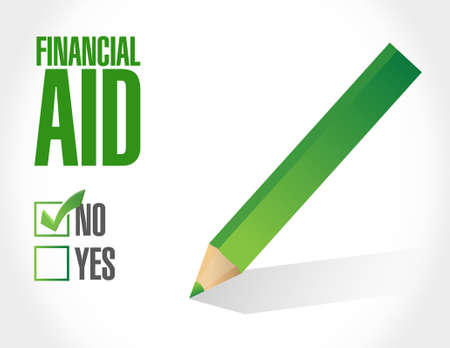Introduction to Refinancing for Veterans and Active Duty Military
When it comes to refinancing a home, veterans and active duty military members enjoy unique advantages that set them apart from civilian borrowers. Through programs like the VA loan, the Department of Veterans Affairs recognizes the sacrifices made by service members and provides them with powerful tools to improve their financial well-being. These refinancing options are designed specifically to honor your service by making homeownership more affordable and accessible. From reduced interest rates to minimal out-of-pocket costs, military-focused refinancing solutions offer flexibility and savings that aren’t available through traditional lending channels. In this article, we’ll explore why these benefits exist and how they open doors for those who have served our country, helping you build stability for your family’s future while maximizing your hard-earned benefits.
2. Understanding VA Loan Refinancing: The Basics
For veterans and active duty military personnel, refinancing a home loan through the VA program can open doors to greater financial flexibility and security. But what exactly does VA loan refinancing mean? At its core, VA loan refinancing allows eligible individuals to replace their existing mortgage with a new one—typically with better terms, lower interest rates, or both. There are two main types of VA-backed refinancing: the Interest Rate Reduction Refinance Loan (IRRRL), often called the VA streamline refinance, and the VA cash-out refinance. Each offers unique benefits tailored for those who have served.
Core Eligibility Requirements
To qualify for VA loan refinancing, applicants must meet certain criteria set by the Department of Veterans Affairs. These requirements ensure that only those who have served our country or their surviving spouses can access these benefits. Here’s a quick look at the basics:
| Eligibility Requirement | Description |
|---|---|
| Military Service | Active duty service members, veterans, and some surviving spouses may qualify. |
| Certificate of Eligibility (COE) | Applicants must obtain a COE from the VA to prove their eligibility for the program. |
| Credit & Income Standards | Lenders may require certain credit scores and proof of stable income, though standards are often more flexible than conventional loans. |
| Primary Residence | The property being refinanced must generally be your primary residence. |
How VA-Backed Refinancing Differs from Conventional Loans
The advantages of VA-backed refinancing go beyond patriotic gratitude—they offer real financial perks compared to traditional options. For example, most VA refinances do not require private mortgage insurance (PMI), even if you have little or no equity in your home. Additionally, closing costs tend to be lower, and there’s often no need for an appraisal with IRRRLs. Let’s break it down further:
| Feature | VA Loan Refinancing | Conventional Loan Refinancing |
|---|---|---|
| Mortgage Insurance Required? | No PMI required for most borrowers. | PMI required if less than 20% equity. |
| Appraisal Needed? | Not always (especially with IRRRL). | Usually required. |
| Flexible Credit Standards? | Generally more flexible for veterans/active duty. | Stricter credit score requirements. |
| Funding Fee? | A one-time VA funding fee applies; some exemptions exist. | No funding fee but other closing costs apply. |
A Smarter Pathway to Savings and Security
If you’re eligible, understanding these basics puts you on the path to making a smart decision about your home financing future. With lower barriers to entry and unique benefits designed specifically for those who serve, VA loan refinancing stands apart as a valuable option in today’s market.
![]()
3. Types of VA Loan Refinancing: IRRRL and Cash-Out
When it comes to refinancing for veterans and active duty military, the Department of Veterans Affairs (VA) offers two standout options tailored to meet different financial goals: the Interest Rate Reduction Refinance Loan (IRRRL), often called the VA Streamline Refinance, and the VA Cash-Out Refinance. Understanding the ins and outs of these programs can help you make a smart move toward financial stability or unlock new opportunities.
Interest Rate Reduction Refinance Loan (IRRRL)
The IRRRL, commonly referred to as the VA Streamline, is designed for current VA loan holders looking to take advantage of lower interest rates or switch from an adjustable-rate mortgage (ARM) to a fixed-rate loan. The beauty of the IRRRL lies in its simplicity—minimal paperwork, no appraisal or credit underwriting in most cases, and typically no out-of-pocket costs since fees can be rolled into the loan balance. This option is ideal for those who want to reduce their monthly payments or gain more predictable finances without starting from scratch.
Key Benefits of IRRRL
- No income verification or home appraisal required in most cases
- Lower monthly payments through reduced interest rates
- Option to finance closing costs into the loan
- Quick and straightforward process—sometimes closed within 30 days
VA Cash-Out Refinance
The VA Cash-Out Refinance gives veterans and active service members the flexibility to tap into their home equity for any purpose—debt consolidation, home improvements, education expenses, or even just building up an emergency fund. Unlike the IRRRL, this program is open to both those with existing VA loans and those with conventional or FHA loans who want to refinance into a VA product. The process involves a full credit check and home appraisal, but it offers a powerful way to access cash while potentially securing better loan terms.
Key Benefits of VA Cash-Out Refinance
- Access up to 100% of your homes appraised value in some cases
- Use funds for any purpose—no restrictions on how you spend your cash-out amount
- Refinance non-VA loans into a VA-backed mortgage
- Potentially lower interest rates compared to other cash-out refinancing options
Which Option Is Right For You?
Your choice between IRRRL and Cash-Out depends on your personal goals. If you’re seeking lower payments without much hassle, IRRRL is your go-to. If you need funds for big life moments or want to leverage your home’s equity, the Cash-Out option could open new doors. Either way, these VA-backed solutions are designed with your service—and your future—in mind.
4. Beyond VA Loans: Alternative Refinancing Options
While VA loans are a powerful tool for veterans and active duty military members, they’re not always the perfect fit for every refinancing situation. Sometimes, your financial goals or unique circumstances may make alternative loan options worth considering. Let’s explore some of the most common alternatives—FHA, USDA, and conventional loan refinancing—and when each might make sense for you.
FHA Refinance
The Federal Housing Administration (FHA) offers refinancing programs that are popular with borrowers who have lower credit scores or less equity in their homes. If your credit has taken a hit or if you want to access cash from your home’s equity, an FHA refinance might be a good option. FHA Streamline Refinancing also allows for reduced documentation and quicker processing, which can be helpful if you need to move fast.
USDA Refinance
If you live in a rural area and originally financed your home with a USDA loan, the USDA Streamlined Assist Refinance program could help you secure a lower rate with minimal paperwork. This program is designed for low- to moderate-income homeowners outside major cities and doesn’t require a new appraisal or credit report in many cases. It’s especially useful if you want to reduce monthly payments without much hassle.
Conventional Loan Refinance
Conventional refinancing is another path for service members and veterans—especially those who have built up significant equity or improved their credit profile. Unlike government-backed loans, conventional loans aren’t limited by VA or FHA guidelines. They can offer more flexibility on property types and loan amounts, and may come with fewer fees if you have strong credit.
Comparing Alternative Refinancing Options
| Loan Type | Main Benefits | Best For | Potential Drawbacks |
|---|---|---|---|
| FHA Refinance | Lower credit requirements; access to equity; streamlined process available | Borrowers with lower credit scores or little equity | Mortgage insurance premiums can add cost |
| USDA Refinance | No appraisal or credit check required; lower rates for rural homes | Homeowners in eligible rural areas with existing USDA loans | Limited to specific geographic areas; income restrictions apply |
| Conventional Refinance | No upfront mortgage insurance; flexible terms and property types | Borrowers with strong credit and substantial equity | Tighter qualifying criteria; private mortgage insurance may be required with low equity |
When Should Service Members Consider These Alternatives?
If your current VA loan doesn’t meet your needs—maybe due to funding fees, property eligibility, or the desire to tap home equity—these alternatives could provide solutions tailored to your unique situation. Always compare rates, fees, and long-term savings before making a decision. By understanding all your options, you can take charge of your financial journey and secure a future that honors your service.
5. Pros and Cons: Deciding If Refinancing Is Right for You
Refinancing your home loan as a veteran or active duty service member can be a game changer, but it’s not a one-size-fits-all solution. Understanding the advantages and potential drawbacks is key to making the right decision for your family’s financial future. Let’s break down what you need to know before taking the leap.
The Upside: Why Refinancing Might Be Worth It
Lower Interest Rates: One of the biggest perks of refinancing, especially through VA loans, is the possibility of securing a lower interest rate. This means lower monthly payments and more money in your pocket every month—a win for any budget-conscious military household.
Switching Loan Types: Maybe you started out with an adjustable-rate mortgage (ARM) and want the stability of a fixed-rate loan. Refinancing gives you that flexibility and peace of mind as you plan for the long term.
Cash-Out Opportunities: If you’ve built up equity in your home, VA cash-out refinancing lets you tap into those funds—whether it’s for home improvements, paying down debt, or funding education.
No Private Mortgage Insurance (PMI): Unlike many conventional loans, VA loans often eliminate PMI requirements, which can save you hundreds of dollars each year.
The Downside: What You Need to Watch Out For
Closing Costs: Even with VA loans, refinancing isn’t free. Expect to pay closing costs—which can sometimes outweigh the savings if you’re not planning to stay in your home long term.
Resetting Your Loan Term: Refinancing usually means starting over with a new loan. If you’ve already paid several years on your mortgage, this could mean more interest paid over time unless you opt for a shorter-term refinance.
Qualification Requirements: While VA loans are more forgiving than many conventional options, lenders will still review your credit score, income, and overall financial health.
Potential for Over-Borrowing: Cash-out refinancing can be tempting, but it’s important to borrow responsibly so you don’t end up underwater if property values change.
Factors to Consider Before Committing
- Your Break-Even Point: Calculate how long it will take for your monthly savings to cover the upfront costs of refinancing.
- Your Long-Term Plans: Are you planning to move soon? If so, refinancing may not make sense.
- Your Current Loan Terms: Compare your existing mortgage details with new offers to see if the switch truly benefits you.
Your Next Step
Deciding whether or not to refinance is a big step—one that deserves careful thought and expert advice. Talk to your lender about your unique situation as a veteran or service member. Remember: The best choice is always the one that supports both your current needs and future dreams.
6. The Application Process: Steps to Refinancing Success
Refinancing your mortgage as a veteran or active duty service member can be a game changer for your finances, but knowing the step-by-step process is crucial for success. Here’s how you can maximize your chances of approval and secure the best possible rates with VA loans and other refinancing options.
Start With Research and Prequalification
Begin by researching lenders who are experienced in working with veterans and military families. Not all lenders offer the same rates or are equally knowledgeable about VA-backed products. Prequalification gives you a realistic picture of what you might qualify for and helps you compare offers without impacting your credit score.
Gather Your Documentation Early
Streamline your application by collecting all necessary paperwork upfront. This includes your Certificate of Eligibility (COE), recent pay stubs or LES, W-2s, federal tax returns, and documentation on existing home loans. Being organized from the start can speed up the process and demonstrate to lenders that you’re serious and prepared.
Submit Your Formal Application
Once you’ve chosen a lender, complete their official refinance application. Most will require a hard credit check at this point, so be ready for a small temporary dip in your credit score. Carefully review all terms before signing—VA loans often have unique benefits like no private mortgage insurance (PMI) requirements, so make sure these are reflected in your offer.
Home Appraisal and Underwriting
If required (especially for cash-out refinances), an appraisal will be scheduled to determine your home’s current value. Meanwhile, the lender’s underwriter reviews your financials and property details to ensure eligibility and assess risk. Be responsive to any requests for additional documents or clarification during this stage—it keeps things moving smoothly.
Tips for Approval and Best Rates
- Check Your Credit: Higher scores generally mean better rates, so address any errors or pay down debts before applying.
- Avoid Major Purchases: Don’t take out new loans or rack up credit card balances during the process.
- Shop Around: Compare quotes from multiple lenders—including banks, credit unions, and specialized VA lenders—to find the best fit.
- Ask About Discounts: Some lenders offer special incentives or rate reductions for veterans—don’t hesitate to inquire!
Closing and Enjoying Your New Loan
If everything checks out, you’ll set a closing date to sign final documents—either in person or virtually. After funding, enjoy lower payments, reduced interest, or access to cash depending on your refinance goals. Remember: refinancing is more than paperwork—it’s a proactive step toward financial freedom tailored specifically for those who have served.
7. Resources and Support for Military Homeowners
Finding the right refinancing option is only part of the journey—knowing where to turn for help can make all the difference. Thankfully, veterans and active duty service members have access to a wealth of resources tailored just for them.
Organizations Dedicated to Military Homeowners
The U.S. Department of Veterans Affairs (VA) is your go-to source for official guidance on VA loans and refinancing benefits. Their website offers up-to-date information, eligibility checkers, and contact details for local offices ready to assist. Another powerful ally is Veterans United Home Loans, which specializes in helping military families secure and refinance homes with dedicated loan officers who understand the unique challenges you face.
Online Tools and Calculators
Several reputable websites provide easy-to-use mortgage calculators and comparison tools tailored for VA borrowers. Check out the NerdWallet VA Loan Calculator or Bankrate’s VA Loan Refinance Guide for side-by-side comparisons, interest rate trends, and estimated monthly payments—empowering you to make informed decisions from your living room.
Support Services Just for You
If you’re navigating financial hardships, organizations like Operation Homefront and The Armed Forces Foundation offer emergency assistance, financial counseling, and even grants to help keep military families in their homes. For more personalized support, the Military OneSource program provides confidential advice on housing, finances, and relocation, 24/7.
Your Next Steps
The road to refinancing doesn’t have to be traveled alone. Whether you’re seeking better rates or looking for expert guidance, these resources stand ready to help you build a more stable future for yourself and your family. Remember: as a veteran or active duty homeowner, there’s an entire community behind you every step of the way.


